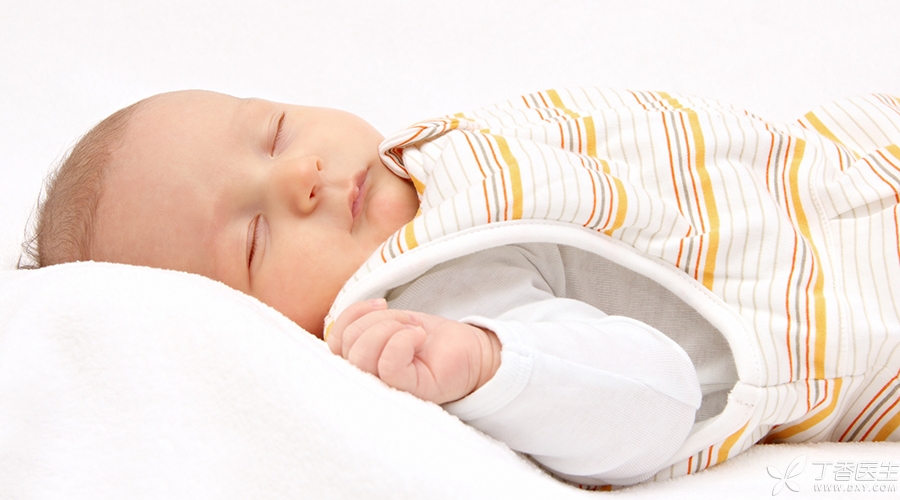
If there is a baby who likes to kick the quilt at home, he is worried that he will catch cold when he kicks the quilt down every night, and he is worried that he will roll the quilt up to cover his face. Adults often need to get up again and again to check the quilt for the baby, causing adults and children to sleep poorly.
At this time, I have to mention a parenting artifact is the sleeping bag.
Why use sleeping bags?
Sleep safety is basically not a problem for adults, but it is a problem that needs great attention for babies.
Because of a little inattention, quilts, pillows, blankets and toys on the bed may become [killers] in the baby’s sleep.
The American Academy of Pediatrics suggests that soft bedding, including blankets and pillows, should be avoided in the bed of babies under one year old to avoid suffocation caused by covering the baby’s nose and mouth.
The sleeping bag can be fixed on the baby’s body, which can ensure that the nose and mouth are exposed to the outside. At the same time, the sleeping bag can also be worn on the body like clothes, without fear of being kicked away by the baby and catching cold. Adults do not need to get up frequently for night inspection, and can sleep better.
How to choose sleeping bags?
1. Thickness
As a thermal insulation tool, thickness is the first issue to be considered when choosing sleeping bags.
The thickness of sleeping bags is generally expressed by TOG. The higher the value, the stronger the warmth retention. Generally, common sleeping bags have four TOG grades, and the applicable indoor temperature for each TOG grade is shown in the following table.
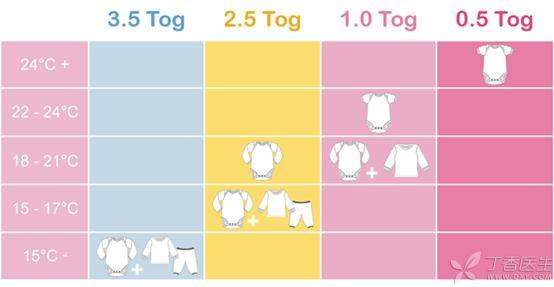
The temperature that sleeping bags of different thicknesses adapt to refers to the indoor temperature rather than the temperature released by the weather forecast. Even without heating, the indoor temperature is usually higher than the outdoor temperature.
When choosing a sleeping bag, It is not recommended to choose thick sleeping bags one after another. On the one hand, too thick sleeping bags may affect the sleep of children. On the other hand, too thick sleeping bags may easily cause the temperature of babies to be too high during sleep, increasing the risk of sudden infant death syndrome. If the temperature is too low, it is more recommended to raise the indoor temperature first and then choose sleeping bags with appropriate thickness.
Sleeping bag selection reference:
- 0.5 Tog is suitable for air conditioning in summer. 1.0 Tog is suitable for taking naps during the day in spring, autumn and when winter is not too cold. 2.5 Tog is the most frequently used, and can be used in spring, autumn and winter in most areas. Winter use in Guangdong, Guangxi, Hong Kong and Macao is already very sufficient.
2. Style
Sleeping bags have different styles, such as swaddling clothes, legs, legs, quilt covers, etc. Can be selected according to the baby’s age and development.
The infant type is suitable for newborns and babies of small months old. Usually, the baby can be wrapped up to avoid sleep uneasiness caused by startle reflex. After the baby is three months old, the startle reflex gradually disappears and the baby’s hands can be exposed.
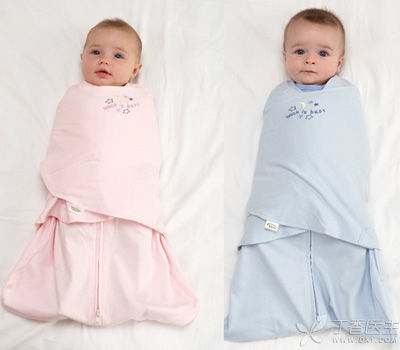
The parallel leg type is suitable for babies over 1 month old. The hem of such sleeping bags is usually relatively wide, and the baby’s legs can move freely inside.
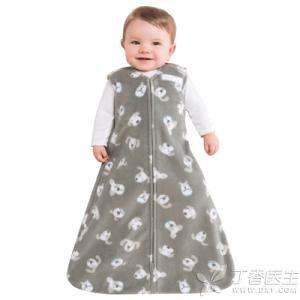
The leg-splitting type is suitable for big babies who can walk. Even if they put on sleeping bags, the babies can move more freely.
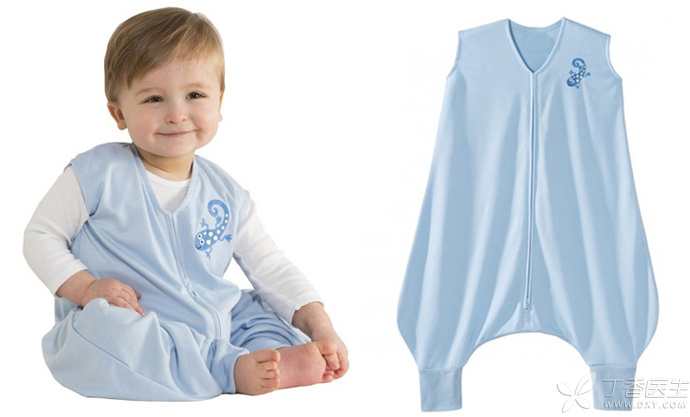
The quilt cover type is suitable for children, at least one year old or older.
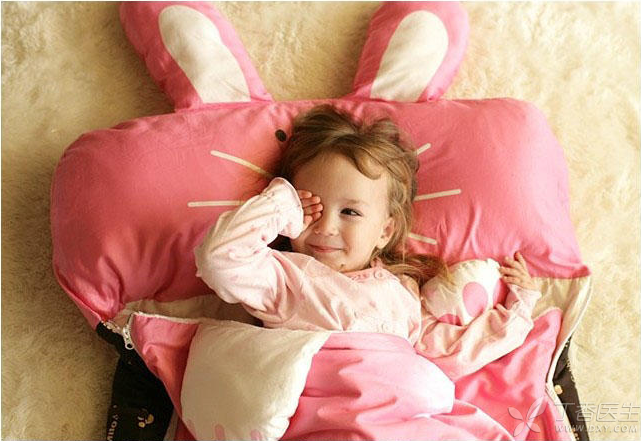
Other details of sleeping bags
When choosing sleeping bags for babies, besides keeping warm and comfortable, safety is also the most important aspect to consider.
The following details should be noticed by Baoma Baoma:
STEP 1 There should be no rope
Because the rope is inadvertently entangled in the baby’s neck, which is likely to lead to tragedy, the latest < < Technical Specification for Safety of Textile Products for Infants and Children > > also stipulates that ropes are not allowed to be used in hats and necks of children’s clothing under 7 years old.
Therefore, parents should not buy sleeping bags containing ropes when selecting, and should not artificially add a rope to make the sleeping bags cling to the baby in the later period.
2. The size should be substantially appropriate
At present, sleeping bags sold on the market are divided into four sizes: newborn, 0-6 months, 6-18 months and 18-36 months according to the baby’s month age.
Sleeping bags of different sizes are different in size, neckline and cuff size. Sleeping bags that do not fit well not only affect comfort and sleep, but also may cause danger. If the sleeping bag is too large, the baby can easily slide into the sleeping bag, thus causing danger. If the sleeping bag is too small and the sleeves and neckline are too narrow, it is easy to restrain or cause local overheating, which may also cause danger.
Therefore, when choosing sleeping bags, it is very important to have the right size. Don’t think that if you buy a large sleeping bag, you can use it for a longer time, and don’t continue to use it if you are already small.
3. Sleeveless sleeping bags are better than sleeved sleeping bags.
Mothers who have paid attention to and bought sleeping bags should notice that sleeping bags abroad are usually sleeveless, not because foreign babies are not afraid of cold, but for safety reasons.
Sleeveless sleeping bags are designed to ensure the circulation of air under the baby’s armpit, which is conducive to heat dissipation and avoids excessive temperature, which will increase the risk of sudden infant death syndrome.
In order to meet the needs of the Chinese people, domestic brands and some foreign brands have also introduced sleeping bags with sleeves, but an opening has been added under the armpit to dissipate heat. When using such sleeping bags, attention should be paid to whether they will cause the baby to overheat.
4. Don’t choose sleeping bags that are too thick, full-wrapped and with hats.
In the safe sleep of infants, it is very important to avoid overheating. The body temperature regulation ability of infants is not yet mature, and overheating is often more dangerous for infants.
Sleeping bags that are too thick, fully wrapped or wearing hats will affect heat dissipation while tightly wrapping the baby, which is easy to cause the baby to overheat. Moreover, fully wrapped sleeping bags or hats are also easy to cover the baby’s nose and mouth, which is easy to cause danger.
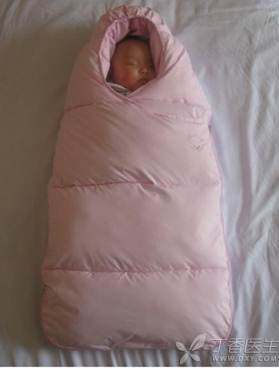
5. Zippers, snap buckles
Sleeping bags are usually fixed by zippers, snap buttons or hook and loop. Sleeping bags with buttons or zippers need to pay attention to the reinforcement of buttons, and zippers should also be checked for firmness to prevent snap buttons or zipper heads from falling and being swallowed by the baby by mistake.
In addition, if it is a sleeping bag designed with a zipper, pads should be provided on the inner side of the zipper, chin, armpit and other positions to prevent the zipper from scratching the baby’s skin. At the top of the zipper, there should be a lock catch to prevent the zipper from being kicked or torn open by the baby. Two-way zippers or zippers pulled down from top to bottom will make it easier to change diapers at night.
Safe use of sleeping bags
Sleeping bags are selected, but safety should also be paid attention to when using them.
You can put a thermometer in the room where the baby sleeps, look at the temperature before going to bed every time, and choose a sleeping bag with appropriate thermal insulation coefficient according to the temperature.
After choosing a suitable sleeping bag, it is generally not necessary to cover the baby with quilts, clothes and the like to avoid overheating the baby.
In addition, after the baby falls asleep, parents can gently put their hands on his stomach to feel the baby’s body temperature. If you feel very hot or sweaty, it means it is too thick.
